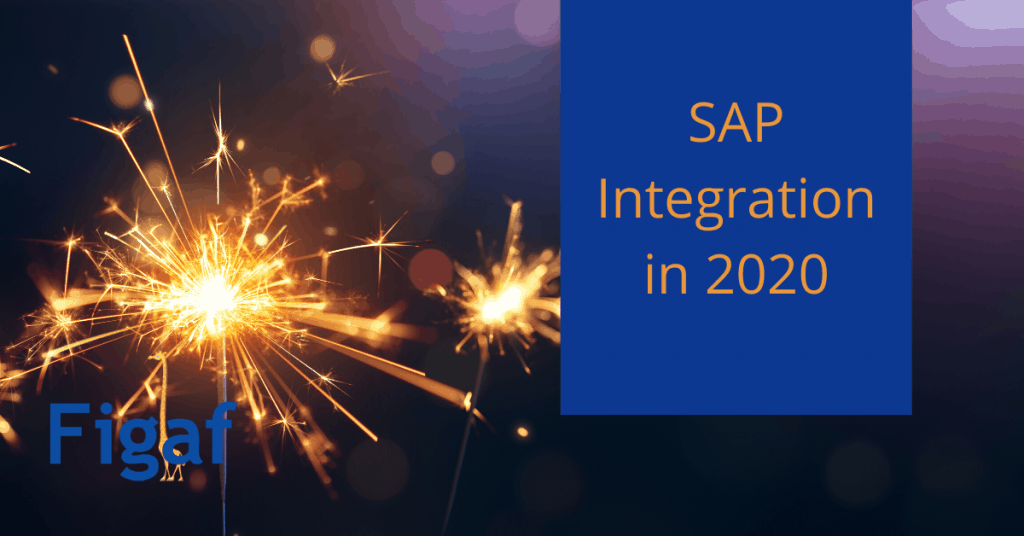This blog contains some of the biggest trends in SAP Integration in 2020. Hopefully, you have already progressed with some of the areas, so you will have more time to focus on the other topics.
The topics covered are:
- Migration to SAP PI/PO 7.5
- SAP CPI as a primary tool
- Automate SAP Integration processes speed up your delivery process
- API Strategy expose your services in a consumable way
- Citizen Integration enables business users to integrate applications themselves
- S/4 HANA migration and integration projects
If you liked the blog and content please help share it with your team, Linked, Twitter or your favorite social network
Migration
Ever since the dawn of software age, there has always been a task to perform migrations. They just happen to ensure customers has the newest software and are able to achieve a lower TCO for their integration, and have support for their tools. The same is true for the SAP Integration portfolio it also undergoes changes. 2020 is the last year that 7.11, 7.3, 7.31 and 7.4 is supported, so in 2021 all customers must be on SAP PI/PO 7.5.
There will still be customers that have not managed to upgrade before then, but they must then accept their system is out of support. So if something bad happens they can move the interfaces to a newer platform.
In some cases, you can go for an upgrade to PI 7.5 with a stack split and then delete the ABAP stack. It is a bit risky and you will need to have good testing in place. It requires that you have ICO’s only.
Migration projects are a technical exercise that adds little value to the business, except they must be able to process it. The business therefore seldom cares about it, it is just some technical thing that must be completed. A migration project can take many months for you to perform, so you need to plan it. It is probably one of the tasks that you want outside help to perform because it will not be a core competency of your team to run migration projects.
At Figaf we have created a set of tools that allow you to automate your SAP PI/CPI process, and they can also be used for migration. Here they can help you test everything is correct and identical to what was seen before. That way you know everything works as seen before.
We have also the only tool on the market that allows you to manage your migration process. You will be able to see how fast your migration is progressing and it does help with configuration and transports. I have a recording of the migration tool here.
If you a large investment in Seeburger Message Maps then the tool will enable you to automate the migration. In 2 minutes you can take the old message mapping and update it to a B2B Add-on structure with the Figaf Seeburger Migration Tool. That is a lot less than the 4-8 hours others have reported for migration of on message mapping.
The migration is not a straight path and can be challenging, but depending on your scenario there can cost savings in the operations aspect.
I have created a list of my best resources for an SAP PI/PO migration here.
SAP Cloud Platform Integration CPI
SAP CPI has already been mainstream and the goto tool for creating new cloud-based integration. For customers using cloud services, it is the best tool compared to SAP PI/PO.
It makes it much easier to create integrations because everything can be managed in just one iflow and modularity.
The amount of redelivered content is growing and it becomes a lot easier to make modifications to it. So you can create your own special processes that can be reused in other places.
There is also the Cloud Foundry process that is going on. Currently, there is a large gap between NEO and CF. I would expect this gap to close since CPI is available on AWS, Azure, and Alicloud and Google is not on the road map. This should mean there are more resources to close the gaps. Once it is done I would expect a CF would be the main place SAP is delivering new functions on SAP CPI, to get customers to move to the platform.
Regarding SAP PI/PO there are still some scenarios that are much better to perform on CPI with regards to handling point to point messages, restarting and design simplifications.
I do see there is a need in the platform for automation to make the processing easier of managing SAP CPI and I believe the Figaf tools can help you in the process. It will handle testing, governance, transports, documentation, and support. It will also allow you to develop faster with Git integration, so you can develop Groovy scripts easier.
If you are new to SAP CPI the process of developing in SAP CPI is different than you are used to in SAP PI/PO. With greater power comes great responsibility. It is therefore recommended to learn how the tool works and how to leverage it. I have created a list of different concepts that you must master before creating your first SAP CPI iflow.
Migration to CPI
Some SAP PI/PO customers have already migrated to SAP CPI and achieved some great savings in regards to operations. I do see that there will be a lot more customers moving to CPI.
Some have already completed the migration and are seeing big returns in cost savings because the cloud platform is cheaper to run and manage.
There are some tools that allow you to reuse message mappings but there is still some limitation for the process. I hope that we at Figaf can take our current migration tool from SAP PI/PO and leverage the same process for a CPI migration. We still have some steps to be completed before it is possible.
Automate the delivery process for SAP Integration
The way SAP PI/PO has been transported and configured has not changed the last 10-15 years. It is basically happening in the same way. You will need to create some CTS+ transports and once they have been applied on target systems users must configure things manually. Testing was also done manually.
This is much different than the rest of the world now is thinking of delivering software much different. Where ideas as DevOps is the new norm most rapid development projects. It allows developers to release code much faster because the processes can be automated.
I do see customers talking about how they are able to automate the delivery process of SAP PI or SAP CPI, so they can live up to a requirement to deliver integration faster.
There are a few aspects that the automation gives. It makes it easier to get other people to take over the code and manage it, this means you will not be as reliant on the same developers, so they can change jobs without affecting you.
Figaf has a solution that allows you to automate the full delivery process so you don’t need to spend months creating your own tool for it.
API Strategy
I have talked with a number of organizations. Most of them have some projects about exposing APIs either from the SAP systems or from other business systems, so their customers would be able to use it.
It is quite a fascinating journey to start on. Just as when people started with an SOA journey in 2005. I guess the API is even more critical now and will help you build more applications. The business may also be more interested in exposing services, so the process may be faster.
I guess you can get a lot of good ideas and inspiration for it and plan it well. In the development process, you probably have to be more agile and experiment. You need to understand that you cannot make correct APIs the first time.
I do like the SAP API mgt platform, it is pretty easy to get started with. The great benefit is that you can expose your first Odata service on the internet really easy from your SAP backend systems.
It may have some limitations to other better platforms. It may be a good place to get started and understand what APIs you have and how to expose them. If you find some great need or challenge you can migrate away from SAP API mgt or combine 2 platforms.
I do think that it is something you will need to learn how to work on in your organization. There are some good books on the market that will make sense to read up on.
I will recommend going through some training or material on the topics, so you will be able to judge how you want to start out. I would start with the SAP API mgt book but will probably also find a vendor neutral book. can
Citizen integration
Citizen integration is a hot topic. It is about allowing the business to self make new integration without having to contact IT for it. It will make it a lot easier to create the correct integrations, but also add a lot of complexity to the landscape.
A good Citizen integration will require
- A good way to govern access business users only see the data they are allowed to
- Monitor so users can see what is going on
- Scalable to more users can use it
- The flexibility that users can find different ways to enrich or modify the content
- Move from Business to IT without re-engineer everything
For BI reporting there already have been some tools like PowerBI alike. Here users can create their own reports one some predefined reports. It does require a good management process because the report can consume a lot of CPU and memory. I did read a good blog on the topic for BI where it has been possible for some time. I would assume that much of the same learning can apply to Integration.
In SAP SuccessFactors there is a place where business experts can create their own reports and files based on some data. I’m not sure where they can send the files and share them. I do like the approach because nobody understands the data better than the business users do.
As a normal user, I do like Zapier and use it for some of my integrations. It is pretty simple to distribute data between systems and map fields, so it would be something that many users will be able to configure. They do have some enterprise accounts but I’m not really sure it will scale to Fortune 500 companies with regards to simplicity, governance, and flexibility.
In the SAP world, there are Open Connectors/Cloud Elements which also could provide some option to make it easier for businesses to exchange data in predefined formats.
I’m looking forward to seeing what will be used and how tools will work in that perspective.
S/4 HANA migration and integration projects
Many SAP customers are considering how and if they want to upgrade to S4/HANA. Some have already upgraded, but most still have that journey ahead. Though some are considering if they want to or not. Let’s see how the support changes.
If you “just” perform an upgrade you can mostly still use all your current integrations. You will need to test to see if everything still works. Some tables have been moved and some programs bay need to be changed.
If you start from scratch there are a lot of new interfaces, so no more need for using IDOCs. So it will instead be SOAP messages or events.
There is also the option to use AIF (Application Interface Framework) to manage .
It will be something that you will be learning from so good luck on that process.

